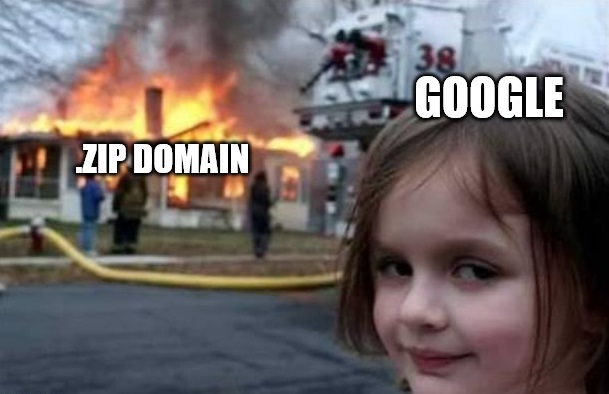Google Adds ZIP Domains

As phishing schemes continue to evolve, it is of the utmost importance to stay vigilant and take proactive measures to protect ourselves. Google’s new ZIP domains have drawn recent concerns about the potential confusion between file and domain names, which could increase the risk of falling victim to online scams. This confusion can help cybercriminals have higher success rates when it comes to phishing as this can lead users to mistakenly click on malicious links or download harmful files, putting their sensitive information at risk.
The Growing Concerns
Cybercriminals continuously develop sophisticated techniques to deceive unsuspecting users. It is no shocks that cybercriminals have exploited the similarity between file and domain names. Phishers are crafting deceptive emails or messages with filenames that mimic legitimate files or domain names. For instance, a file named “invoice.zip” may seem like there is nothing out of the ordinary, but clicking it could download malware or redirect to a phishing site. These tactics aim to deceive users into thinking they are interacting with a safe file or reputable website. Falling victim to such attacks can result in financial loss, identity theft, and other serious consequences. It is crucial to be aware of these risks and take appropriate measures to protect ourselves.
Browser Mitigations: A Line of Defense
Web browsers play a vital role in safeguarding users against online threats. They employ various security measures, including built-in filters and warning systems, to detect potentially dangerous websites and files. These defenses help mitigate the risk of confusion between file and domain names. But how will this work with the new ZIP domains? Luckily Google has responded to the concerns of this change. Google stated that browser mitigations are already in place to protect users from abuse and that the risk of confusion between file and domain names is not new. These reassurances should alleviate some concerns, knowing that are some measures that are being taken to address this issue.
What Can You Do to Stay Safe?
Now what can you do to avoid phishers? We recommend you do these 3 things to reduce the chance of falling victim to these cybercriminals:
Stick to Trusted Sources: One of the fundamental principles of online security is to rely on trusted sources for file downloads and website visits. Stick to reputable websites and trusted vendors when downloading files or clicking on links. Avoid interacting with emails or messages from unknown or suspicious sources.
Exercise Caution with Links and Downloads: Treat every link and download with caution. Avoid clicking on unfamiliar links, especially those that come from unverified sources. Be wary of emails or messages urging you to download files or provide personal information without proper authentication.
Research Before Clicking: If you encounter a link with a .zip or .mov extension, take a moment to research it before clicking. Search for the file or domain name on reputable search engines or security websites to determine if it is associated with any known scams or threats. This simple step can save you from potential harm.
Stay Informed, Stay Cautious, and Stay Safe
Protecting yourself from phishing sites requires awareness, caution, and proactive measures. The risk of confusion between file and domain names highlights the importance of staying informed and practicing good online habits. Browser mitigations, coupled with user awareness and informed decision-making, provide a strong defense against phishing attacks. If you want to take a deeper diver into .zip domains, check out this article!

